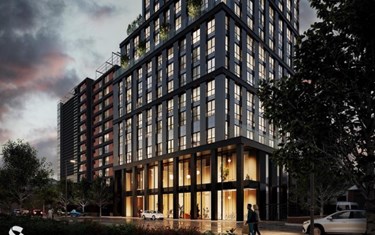Izzie Diment, Transport Planner at Paul Basham Associates and Suzie Green, Senior Planner at Bidwells, are part of the Thames Valley Young Planners organising committee, who look at why Milton Keynes was chosen to host this year’s conference.
As the Young Planners’ Conference is fast approaching, the committee wanted to reflect on why we have chosen Milton Keynes as the host city for the conference.
When preparing the bid, the conversations surrounding New Towns as the archetype for utopian visions were not few and far between, and as a committee, this got us thinking of Milton Keynes as the host city for such an event.
 Milton Keynes new town design
Milton Keynes new town design
A new city that has been subject to scrutiny over the years, with the “different by design” grid structure approach that the city was designed around back in 1967 under the New Town Act, allowed us to focus the topic of the conference around Utopian and Dystopian ideologies and how Milton Keynes exhibits both.
From the concrete cows to the placement of roundabouts throughout the city, Milton Keynes has always been subject to strong views either for or against the design approach. More specifically, a city that has been designed with residents and community in mind with local centres strategically positioned to allow residents to make short journeys, arguably is a Utopian concept.
But it has also had to address the fact that some of these local centres are now failing and are in need of regeneration. Are we unable to solely design for utopian ideologies without experiencing dystopian aspects too?
Infrastructure
Looking at it from a planning and transport planning perspective, the planners and urban designers behind the design of Milton Keynes got a lot right in relation to the utopian design concepts that are still relevant today. For example, the Redway network - a 200-mile plus stretch of traffic-free routes around the city offering a safe, segregated route for pedestrians and cyclists.


Campbell Park and a Milton Keynes Redway. Credit: Laura Robinson
Furthermore, the green infrastructure that was designed into the city currently covers over 30% of the total city area and includes linear parks, biodiversity corridors and flood risk management, some of which will be showcased on the study tours.
When considering the impacts of climate change and the narrative of shifting the reliance on the private car, both the Redways and the high percentage of green infrastructure can arguably be viewed as utopian, innovative ways to reduce the impact of climate change, even back in 1967.
Regardless of opinions on Milton Keynes, while some features and concepts that were designed into the city have not achieved their desired ‘utopian’ effect, it is incontestable that some of the design elements have set an example for other towns and cities to follow and adapt to future proof them and their residents.
We are excited to be hosting the conference in this undeniably unique city and hope that some of these positive opinions we hold as a committee can be shared and the importance of planning and town planning highlighted to the delegates attending.
 Milton Keynes concrete cows
Milton Keynes concrete cows
Young Planners’ Conference: 21-22 October
The event is sold out. The full programme can be found here.
For updates throughout the conference, follow the RTPI Twitter, LinkedIn and Instagram channels.
Watch Vice President candidate Paul Willmott talk about why Milton Keynes is his favourite place (from 8mins 58 secs).


